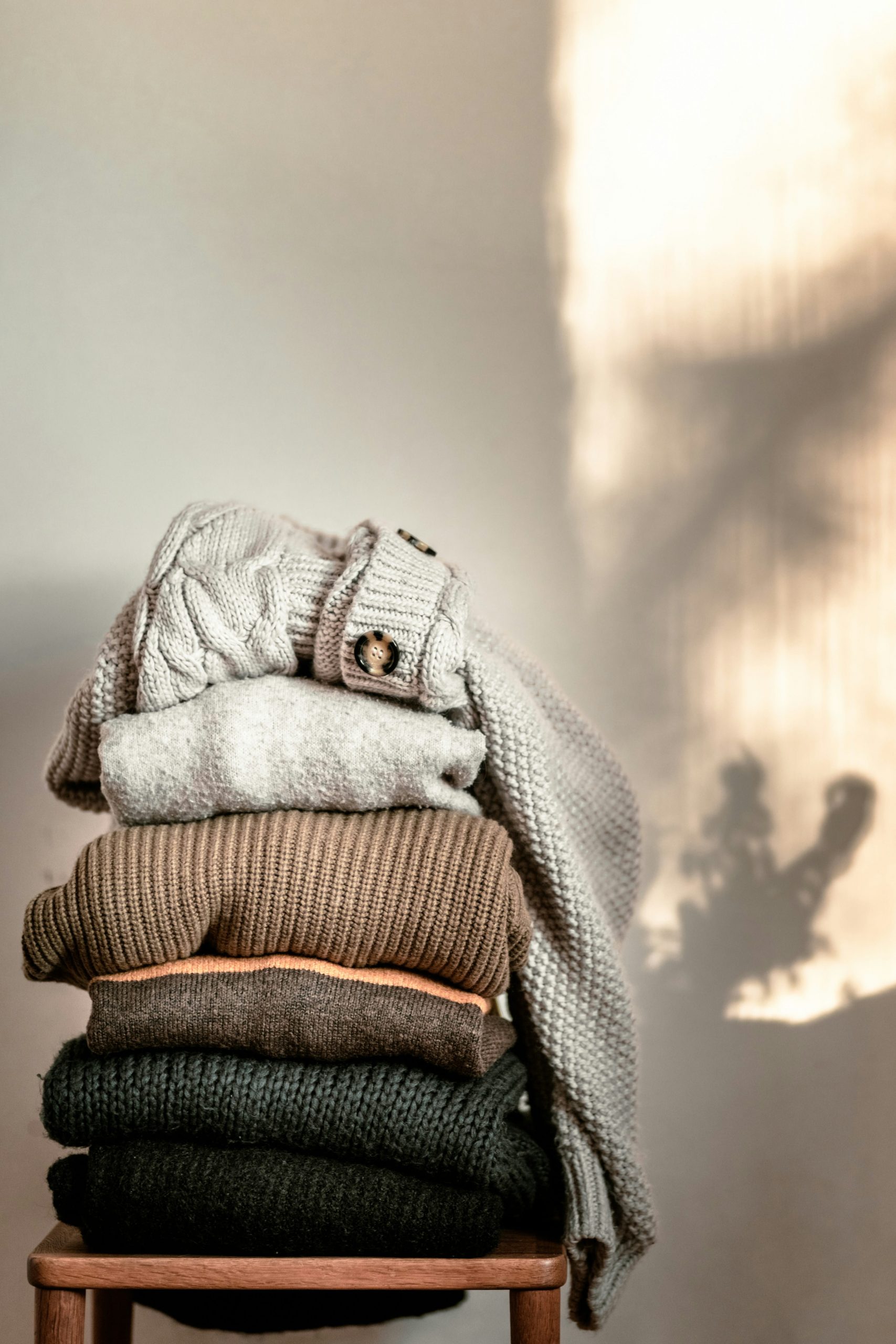Когда дело доходит до производства текстиля и шитья, есть множество тканей на выбор. Одна ткань, которая может не привлечь столько внимания, сколько заслуживает, - это ребристый трикотаж. Но что именно такое ребра, и что делает ее уникальным?
Ткань с ребристом - универсальный текстиль, часто используемый в производстве одежды для манжеты, воротников и пояс. Но у него есть гораздо больше применений и преимуществ помимо этих общих приложений.
В этом руководстве для новичков по ребритной ткани мы рассмотрим все, что вам нужно знать, от его свойств и использования до советов по шитью, помалы и заботы о одежде, сделанных из вязания ребристых. Так что, являетесь ли вы опытным текстильным профессионалом или только начинаете, присоединяйтесь к нам в путешествии, чтобы открыть для себя мир реберной ткани.
Что такое ребристая ткань?
Определение ребристого вязания
Ткань с ребристом - это тип вязаной ткани, которая оснащена поднятыми вертикальными хребтами или «ребрами» с обеих сторон ткани. Эти ребра могут варьироваться по ширине и могут быть расположены в разных рисунках, таких как ребра 1 × 1, 2 × 2 или 3 × 3. Наиболее распространенный рисунок ребер - 1 × 1, который состоит из одного вязаного стежка, за которым следует один стежок Purl.
Характеристики и свойства ребристого вязаного ткани,
Одной из определяющих характеристик грудной ткани является ее эластичность. Благодаря своей уникальной конструкции, ребристый вязаный вязание может растягиваться больше, чем другие типы вязаных тканей, что делает его идеальным для применений, где необходима растяжение, например, в манжетах или пояс. Тем не менее, это также означает, что ребристый трикотаж может быть подвергнут растяжению из формы с течением времени, если не ухаживает за должным образом.
Общие материалы, используемые при производстве ребер
Ткань с ребристом может быть изготовлена из различных материалов, в том числе хлопка, шерсть, шелк и синтетические волокна, такие как полиэстер и нейлон. Различные материалы будут иметь разные характеристики и свойства, поэтому важно выбрать правильный тип ребристой ткани для предполагаемого применения.
Типы реберной ткани
Существует несколько различных типов реберной ткани, каждый из которых отличается числом и расположением ребер. Вот некоторые из наиболее распространенных типов ребристого вязания:
Ребра 1 × 1: это наиболее распространенный тип ребристого вязания и отличается чередующимися трикотажными швами в шаблоне 1 × 1. Он часто используется для манжеты, воротников и пояс.
Ребра 2 × 2: этот рисунок вязана имеет две трикотажные швы, за которыми следуют две пленки, в результате чего более широкий рисунок. Он часто используется для свитеров, шарфов и других предметов одежды, где желательна более толстая, более выраженная ребра.
RIB 3 × 3: это более широкий рисунок в трибун, который оснащен три вязаных шва, за которыми следуют три шва. Он часто используется для более тяжелых предметов одежды, таких как куртки и пальто.
Другие типы рисунков вязаного вязания включают ребра 4 × 4, 5 × 5 и 6 × 6, среди прочего. Каждый шаблон будет иметь свои собственные уникальные свойства и использование, поэтому важно выбрать правильный тип ребристой ткани для предполагаемого применения.
Применение реберной ткани
Общее использование реберной ткани в производстве текстиля
Ряд -ткань имеет широкий спектр применений в мире моды и текстиля. Его эластичные и эластичные свойства делают его популярным выбором для использования в манжетах, воротниках и пояс, так как он может комфортно соответствовать телу без ограничения движения.
Преимущества и недостатки использования ребристого вязания в производстве одежды и текстиля
В дополнение к этим общим приложениям, ребристые вязания также можно использовать для других целей, таких как:
Свитера и кардиганы: ребристая ткань можно использовать для создания вырез, манжеты и подол свитеров и кардиганов, придавая им готовый, полированный вид.
Футболки и майки.
Платья и юбки: ребристый трикотаж можно использовать для пояса и подмох платьев и юбок, обеспечивая плотную прилегающую форму без необходимости дополнительных закрытий.
ActiveWear: Rib Lik является популярным выбором для использования в активной одежде, так как он позволяет широко распространять движение, не теряя своей формы или растяжки.
В целом, ребристая ткань - это универсальный текстиль, который можно использовать в широком спектре одежды и аксессуаров.
Работа с грудной тканью
Работа с грудной тканью может отличаться от работы с другими типами тканей из -за ее уникальных свойств. Вот несколько советов по работе с ребристой тканью:
Выберите правильный тип ребра для вашего проекта. Рассмотрим ширину ребер и содержание волокна, чтобы обеспечить наилучшие результаты.
Используйте иглу для растягивания или шарики при шитью ребристых ткани. Эти иглы предназначены для прохождения вязания и не повредят или сломают волокна.
Используйте растяжку или зигзагообразное стежок при шитью ребристых ткани. Это позволит швам растягиваться с тканью и предотвратить их нарушение.
Отрегулируйте настройки натяжения, чтобы обеспечить чистую отделку, не растягивая ткань при использовании Serger.
При разрезании реберной ткани обязательно вырезайте вдоль линий ребра, а не по ним, так как это может привести к скручиванию и вытянутой форме.
При нажатии на ребристую ткань используйте низкую тепловую настройку и избегайте нажатия слишком сильно, что может привести к уплощению ребер.
Следуя этим советам, вы можете эффективно работать с реберной тканью и достичь отличных результатов проекта.
Уход за ребристыми тканью
Правильный уход важен для обеспечения того, чтобы ребристая ткань длилась долго и сохраняет ее растяжение и форму. Вот несколько советов по уходу за тканью для ребер:
Вымойте ребристую ткань в прохладной или теплой воде, так как горячая вода может привести к сокращению или потере своей формы.
Используйте мягкое моющее средство, которое сформулировано для деликатных тканей. Избегайте использования смягчителей ткани, так как они могут покрыть волокна и уменьшить растянутую ткани.
Избегайте использования сушилки для сухой грудной ткани, так как тепло может привести к сокращению или потере своей формы. Вместо этого положите ткань, чтобы высохнуть или повесить на бельевую веревку.
Если требуется гладение, используйте низкую тепловую настройку и нажащую ткань, чтобы защитить ткань от прямого огня.
Храните плоскую плоскую ткань или свернутую, а не сложенную, чтобы предотвратить складку и растяжение.
Следуя этим советам по уходу, вы можете сохранить ребристую ткань в отличном состоянии и в течение длительного времени наслаждаться ее эластичными, удобными свойствами.
Заключение
Рембная ткань - это универсальная и популярная ткань, которая используется в широком ассортименте одежды и проектов. Понимая свойства и характеристики реберной ткани, а также как работать и заботиться о ней, вы можете максимально использовать эту уникальную ткань и добиться отличных результатов в своих проектах.
Независимо от того, являетесь ли вы новичком или опытным ремесленником, ребристая ткань - отличный выбор для добавления растяжения и комфорта в ваши творения. Так что идите дальше и экспериментируйте с ребристой тканью и посмотрите, как это может улучшить ваши проекты по шитью и вязанию.

 English
English Deutsch
Deutsch Français
Français Italiano
Italiano Español
Español Русский
Русский Polski
Polski Nederlands
Nederlands Svenska
Svenska


